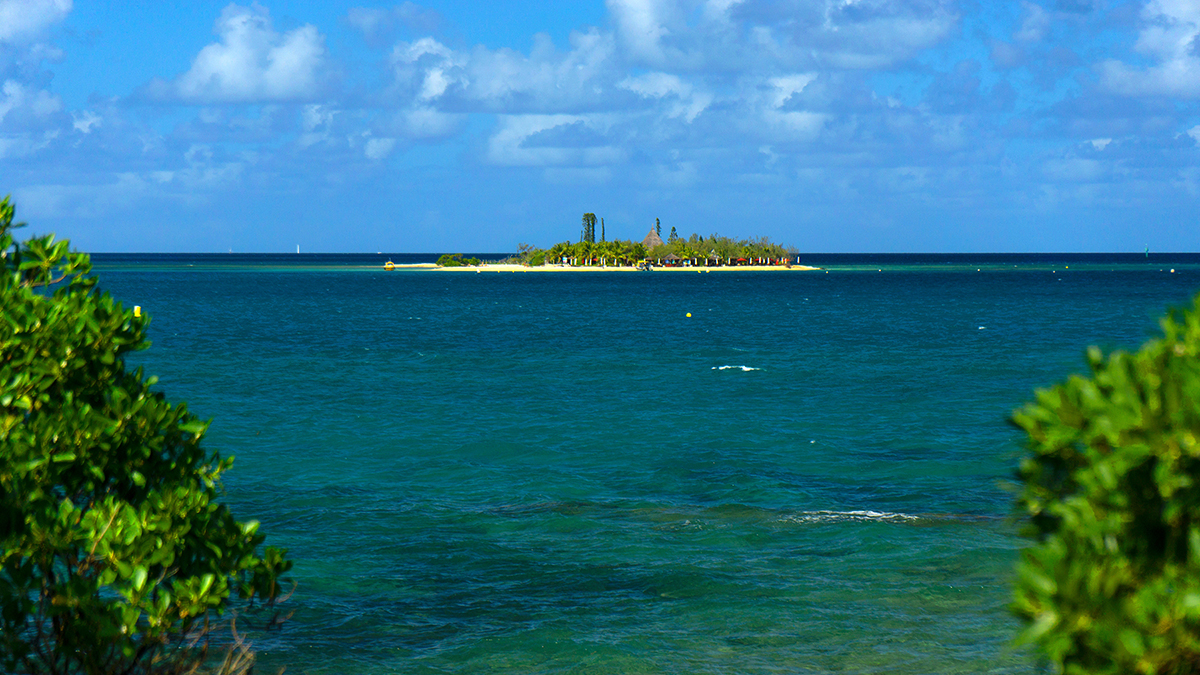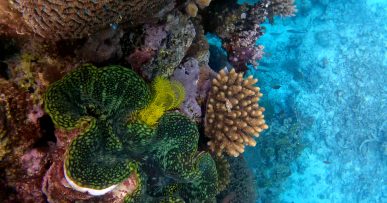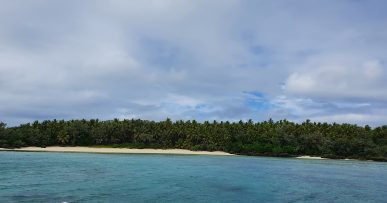- Snorkelling Pléiades du Nord
- Snorkelling Pléiades du Sud
- Exploring the underwater trail of Île aux Canards
Snorkelling New Caledonia: Île aux Canards underwater trail
On a visit to Nouméa we decided to try the underwater trail at Île aux Canards (Duck Island). A short water taxi ride from Anse Vata, it’s one of the most accessible snorkel spots in New Caledonia — and part of a UNESCO world heritage marine reserve. Here’s our honest review.
Île aux Canards – Snorkelling Nouméa
What It’s Like
Île aux Canards is a tiny islet just ten minutes offshore from Anse Vata Beach, Nouméa. It’s heavily tourist-oriented, with beach attendants, sun loungers, and a restaurant. The island is circled by coral reef but snorkelling is restricted to the western side, where the underwater trail is located. The trail is marked with buoys and underwater signs explaining the marine life and habitat you pass along the way.
Image: Adobe Stock (we didn’t have a camera at the time)
The Snorkelling Experience
Conditions: We visited mid-morning. It was cloudy and windy, so visibility was limited to about 5–6 metres. The bigger challenge was the sheer number of tourists — many were standing on the reef or swimming directly over the top of us, which was frustrating and damaging to the coral.
The reef: The beach itself is coral rubble, so reef shoes are useful. To reach the trail, you swim a few metres across damaged coral before following five white buoys that mark the route. The deeper you go along the trail, the healthier the reef looks. Unfortunately, near-shore sections are degraded.
Marine Life We Saw
Despite the conditions, we spotted a range of reef fish including spinefoot, sweetlips, angelfish, wrasse, and of course, clownfish. Larger groupers were also curious enough to check us out as we swam past. Coral growth was patchy, but fish life made the swim worthwhile.
We didn’t have an underwater camera on our visit, but this YouTube video by Johan Bas (2016) gives a good idea of the trail and visibility. Conditions haven’t changed much since then.
Why Snorkel Here
The underwater trail at Île aux Canards is unique: it’s accessible, educational, and set within a UNESCO world heritage marine reserve. If you’re new to snorkelling, it’s an easy way to see reef life without venturing far from Nouméa. But for experienced snorkellers, it can feel crowded and degraded compared to healthier reefs further afield.
Getting There – Water Taxi from Anse Vata
Île aux Canards is just a 10-minute water taxi ride from Anse Vata Beach (opposite the Hilton hotel). At the time of our visit, the fare was about 1200 CFP (~$15 AUD return). Boats run regularly throughout the day. It’s quick, easy, and one of the closest snorkel options to central Nouméa.
Would We Return to Île aux Canards?
No. While we appreciated the concept of the underwater trail, the reality was less enjoyable — limited visibility, degraded coral nearshore, and overcrowding on the reef. For us, the island felt more like a tourist lounge destination than a serious snorkel site. We’d look for other bays or reefs in New Caledonia instead.
Our Verdict – Île aux Canards Snorkelling
- Snorkel rating: ⭐☆☆☆☆ (1 out of 5)
- Pros: easy access from Nouméa, UNESCO marine reserve, educational underwater trail.
- Cons: poor reef health nearshore, tourist pressure, limited visibility, overcrowding.
FAQs – Snorkelling Île aux Canards
Is Île aux Canards good for snorkelling?
It’s convenient and accessible, but reef health is poor and tourist pressure is heavy. Best for beginners or those with limited time in Nouméa.
What marine life can you see?
Spinefoot, sweetlips, angelfish, wrasse, clownfish in anemones, and occasionally groupers. Coral cover is patchy.
How much does it cost to get there?
Water taxis cost around 1200 CFP (~$15 AUD return) from Anse Vata Beach.
Is the underwater trail worth it?
It’s interesting as an educational snorkel experience, but there are healthier and more rewarding reefs to explore elsewhere in New Caledonia.





